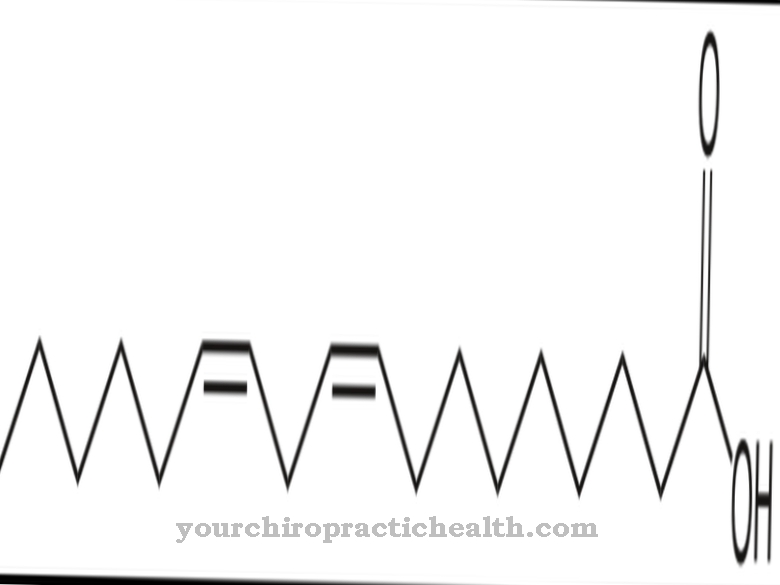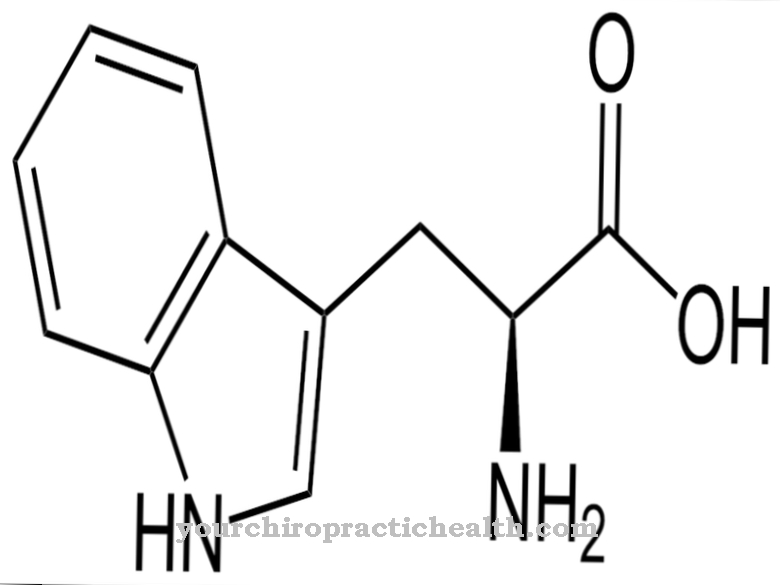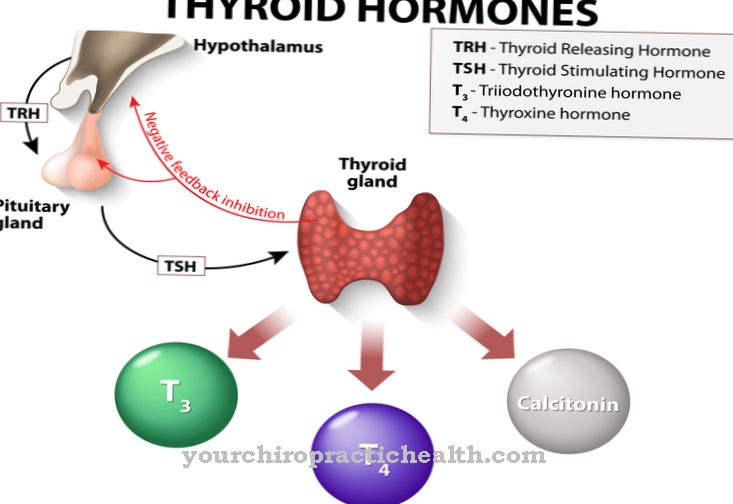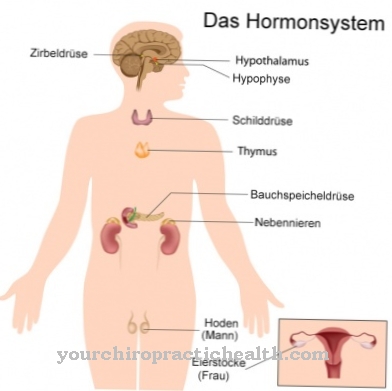Triglycerides represent triple esters of glycerine with fatty acids. They are used by many organisms as energy stores. In the human organism they are the main component of adipose tissue.
What are triglycerides?
Triglycerides contain three fatty acids esterified with glycerine in the molecule. The prefix "Tri" already indicates the number of fatty acid molecules. The triglycerides are also known as lipids and represent fats and fatty oils.
However, the lipids also include phospholipids which, in addition to two fatty acids, also have a phosphorylated residue that is also esterified on glycerol. The more double bonds there are in the fatty acids, the lower the melting point. That is why fatty oils contain a large number of unsaturated fatty acids (fatty acids with double bonds), which make it difficult for crystals to form. To distinguish them from essential oils or mineral oils, they are also called fatty oils. The esterified fatty acids generally have 12 to 22 carbon atoms.
However, shorter fatty acid molecules can also be found in the triglyceride. Triglycerides that contain fatty acids with chain lengths of 4 to 12 carbon atoms are referred to as medium-chain, while triglycerides with fatty acids from 12 carbon atoms are considered to be long-chain. A distinction is also made between simple and mixed triglycerides. The simple triglycerides have three identical fatty acids, while the mixed representatives contain different fatty acids.
Function, effect & tasks
Triglycerides are an important part of food as well as the most important energy store in the body and are indispensable for vital functions and are constantly being built up and broken down in the course of fat metabolism.
In times of excess food they are built up in the body as energy reserves and are mainly deposited in the fatty tissue. Significant amounts of triglycerides can also be stored in the liver. When eating food, the fats and oils contained in the food are broken down by the digestive enzymes of the pancreas into glycerine and the individual fatty acids in order to be able to be absorbed by the small intestine at all. In the intestinal cells, fatty acids and glycerine form triglycerides again. In the blood, so-called lipoproteins ensure the formation of chylomicrons with the fats and oils in order to make them transportable.
They reach all body cells via the bloodstream, where they can be metabolized to generate energy. The uptake in the body cells is mediated by insulin. Insulin is responsible for the absorption of glucose as well as fatty acids and triglycerides into the cells. The carbohydrates and fatty acids that are not required are converted into body fat and stored there as fat in the adipose tissue. In the tribal history, this function of the triglycerides often ensured the survival of the organisms in case of famine.
Today this function has lost its importance for most people. Nevertheless, in addition to carbohydrates, fatty acids represent an important source of energy in normal energy metabolism. Furthermore, fatty acids are often the starting materials for important bioactive substances such as cholesterol, fat-soluble vitamins or important hormones (estrogens, testosterone, cortisol, etc.). Triglycerides can also be converted to phospholipids by replacing a fatty acid with phosphorus-containing compounds. Phospholipids are the most important components of cell membranes.
Education, occurrence, properties & optimal values
Triglycerides are found widely as dietary fats or oils in most foods. Meat and sausage products in particular are very rich in fat. Triglycerides with unsaturated fatty acids are often found in fish as fish oils. Some plants also contain oils.Nuts and seeds in particular are very rich in oil.
In the human body, the fats ingested through food are not stored directly. First, the dietary fats and oils are split into fatty acids and glycerine and re-esterified with one another to re-synthesize the triglycerides. However, fatty acids and glycerine are often used to generate energy or to synthesize important active ingredients. Furthermore, triglycerides can also be formed from carbohydrates or proteins. During the citric acid cycle, glucose and amino acids are broken down into pyruvate. Pyruvate (pyruvic acid) is an intermediate in the synthesis of many compounds. Among other things, it also serves to build up fatty acids.
Diseases & Disorders
Triglycerides are of great importance to health. Even the intake of too many dietary fats can increase blood lipid levels. Elevated blood fat levels promote the formation of arteriosclerosis, which is responsible for many cardiovascular diseases.
The triglycerides are transported in the blood with the help of transport proteins. Pure triglycerides are insoluble in water. The so-called lipoproteins have a mediating effect and bring the fats and oils into solution. In the process, protein lipid complexes are formed which have different densities. There are chylomicrons, very low density lipoproteins (VLDL), low density lipoproteins (LDL) and high density lipoproteins (HDL). The chylomicrons transport the dietary fats, which are reassembled from food in the intestine, into the fat cells. This is where the fats are stored.
The very low density lipoproteins (VLDL) are responsible for the transport of the body's own fat produced in the liver into the fat cells. The triglycerides are transported from the fat cells through the low density lipoproteins (LDL) to all body cells in order to fulfill important functions. After all, high density lipoproteins (HDL) are responsible for transporting cholesterol to the liver, where it is broken down. With the intake or the increased synthesis of triglycerides, a lot of LDL is formed in order to bring cholesterol and triglycerides to the body cells. This leads to increased deposition of cholesterol and the development of arteriosclerosis. With a healthy lifestyle, the HDL predominate, which break down cholesterol in the liver.
























.jpg)



